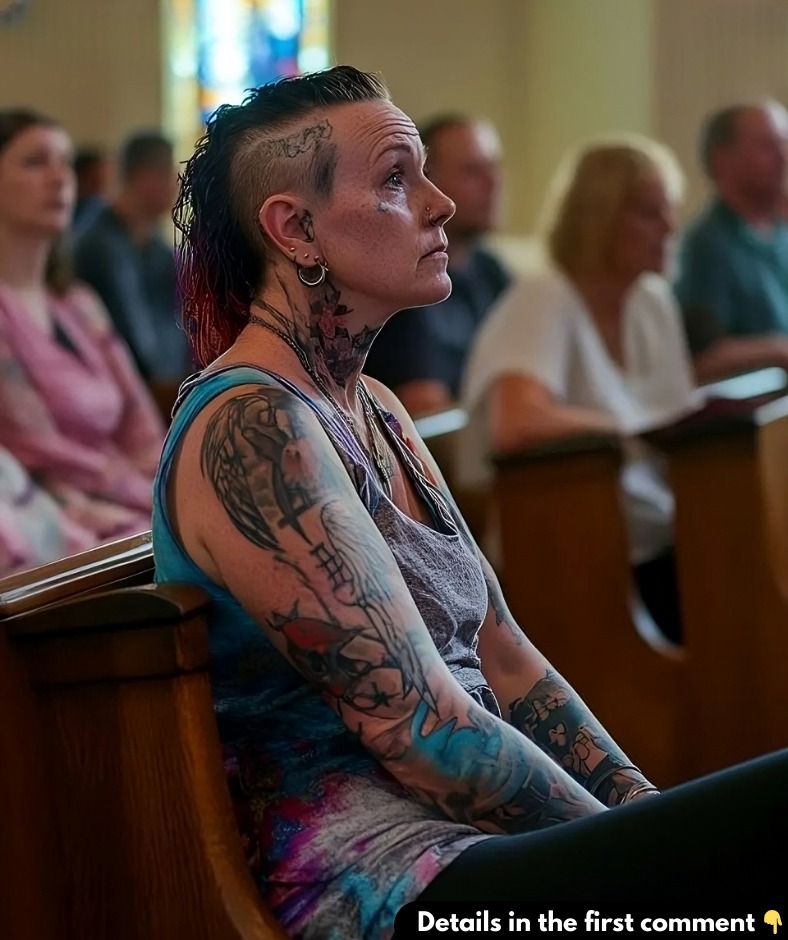Last Sunday, I experienced a moment that made me rethink everything I believed about what’s “appropriate” in a place of worship. As I entered church, I saw a woman, likely in her 40s, covered in tattoos and with multiple piercings. Growing up, I was taught that church was a space of reverence, where modesty in dress reflected respect for the sacred. Seeing her challenged those long-held beliefs. I began to wonder: Are my views on church attire outdated? Should we really be imposing expectations on how people dress when they come to worship?

Questioning Traditional Ideas of Church Attire
The sight of this woman’s bold appearance made me reconsider the traditional views I’d grown up with. After the service, I politely mentioned that her look seemed unconventional for church and suggested she might opt for a more modest style. Her response was simple but powerful: “How I look has nothing to do with you.”
Her words stuck with me. I realized that maybe the discomfort I felt was rooted in old-fashioned beliefs that no longer apply. Is it really fair to expect everyone to dress the same way when we live in a world that celebrates individuality and personal expression? As society continues to evolve, maybe it’s time for our perceptions of what’s “appropriate” in church to change as well.
Should Churches Have a Dress Code?
Many of us were raised with a specific image of what church attire should be: conservative dresses, suits, ties, and modest clothing. These unspoken dress codes created a sense of unity, often serving as visual symbols of respect for the sacred space. But times have changed. Tattoos, piercings, and unique fashion choices are now widely accepted as forms of self-expression.
So, do we really need a standard for how people dress in church? For some, dressing conservatively is a way to show respect for the space and the traditions of worship. But others argue that how we look on the outside shouldn’t dictate our ability to connect with our faith. Isn’t the heart of church supposed to be about acceptance, love, and unity? Values that go beyond how we appear?
Embracing Diversity in Worship
Churches should be spaces of unity and inclusivity. If we focus too much on appearances, we may lose sight of what really matters—building relationships and growing closer to God. Judging someone based on their tattoos or piercings might prevent us from truly connecting with them and hearing their unique story.
Everyone who comes to church brings their own experiences and personal history. For many, tattoos, piercings, and unconventional clothing reflect parts of their life journey—their struggles, their triumphs, and their identity. By focusing only on outward appearances, we risk overlooking the richness and diversity of stories that could deepen our understanding of faith and life.
Finding a Balance: Tradition vs. Individuality
While embracing personal expression is important, there’s also value in honoring tradition. For some, covering up tattoos or dressing modestly in church is a way of respecting the customs they grew up with. It’s a form of acknowledgment that others might feel uncomfortable with more visible tattoos or casual attire.
But it’s also essential to recognize that everyone’s relationship with their faith is personal. Some people find comfort in traditional church clothes like suits or dresses, while others feel most connected to their faith when they can express their true selves. Finding a balance between respecting tradition and embracing individuality could create a more inclusive and welcoming church environment.
Cultivating Mutual Respect in Church
The solution might lie in fostering mutual respect. Instead of strict dress codes, churches could encourage thoughtful attire that considers both personal expression and the shared sacred space. By promoting understanding and respect, churches can create environments where everyone feels welcome, regardless of how they choose to express themselves.
Encouraging people to dress in a way that feels right for them, while being mindful of the space, could help build a more inclusive atmosphere. This approach would allow churches to honor both tradition and modern values of individuality and acceptance.
Creating a Church That Welcomes Everyone
At the heart of any faith community is the principle of inclusivity. Jesus himself reached out to people who were often judged by society, showing compassion and acceptance. If we aim to live by these values, we need to look beyond appearances and focus on what truly matters—the sincerity of someone’s faith and their desire to connect with something greater.
When we see someone in church who doesn’t fit the traditional image of a worshiper, it’s an opportunity for self-reflection. It challenges us to set aside our assumptions and embrace the diversity that makes our communities richer. Instead of focusing on appearances, we should strive to cultivate an environment of open-mindedness and acceptance.
Conclusion: Redefining What’s “Appropriate” for Church
Looking back at my initial discomfort, I now see that it was based on an outdated view of what’s “appropriate” for church. Church should be about so much more than outward appearances. It’s about creating a space for unity, compassion, and love. By welcoming diversity and embracing personal expression, we can build a faith community that allows everyone to feel accepted and valued, no matter how they look.
Next Sunday, when I see someone who looks different from what I’m used to, I’ll remember that they, too, are there to connect with something bigger. Like me, they’re seeking spiritual fulfillment and a sense of belonging. By embracing diversity, we can make our places of worship more inclusive, allowing everyone to express their faith in their own way.





